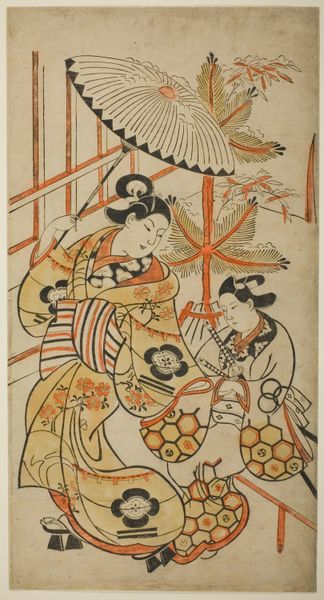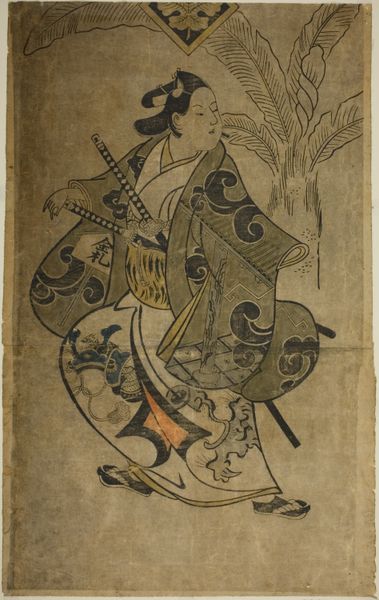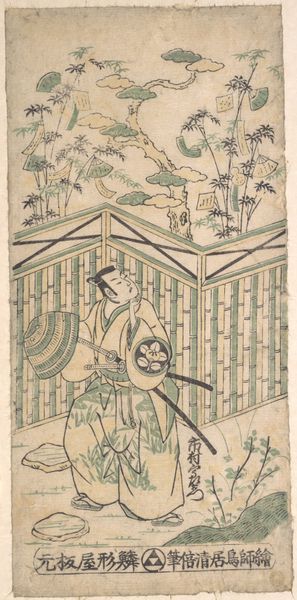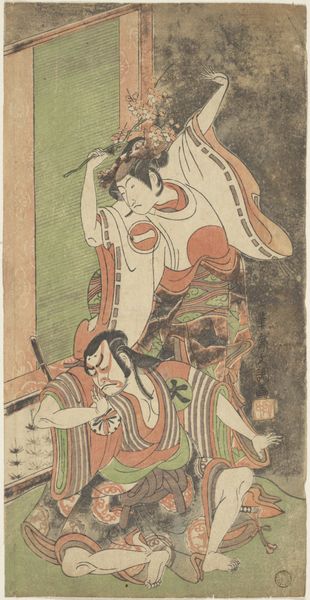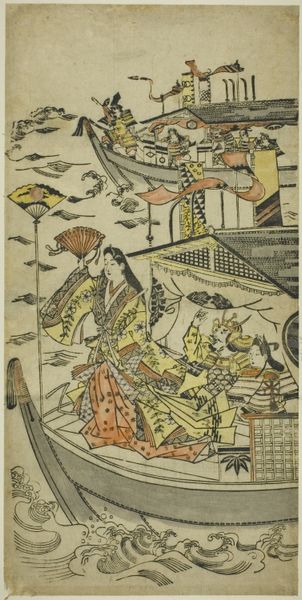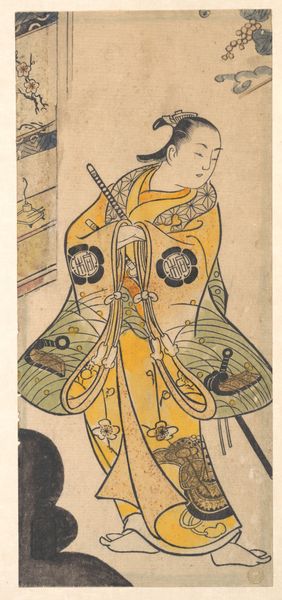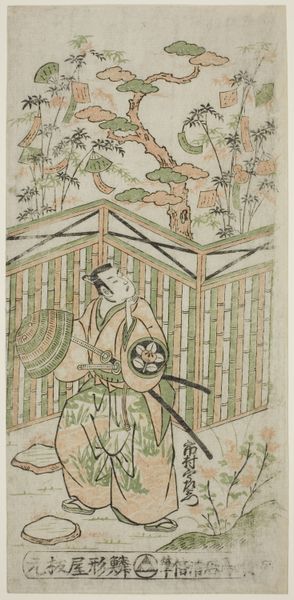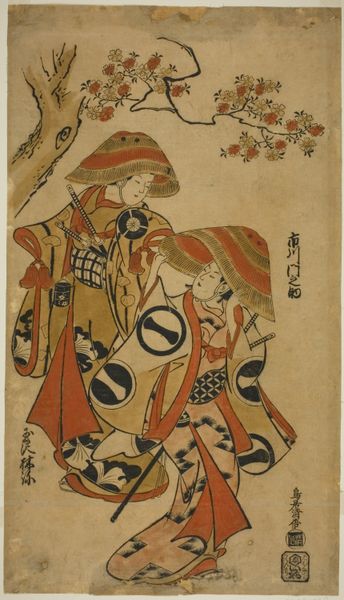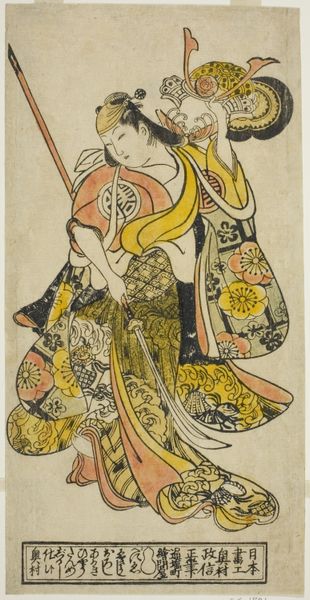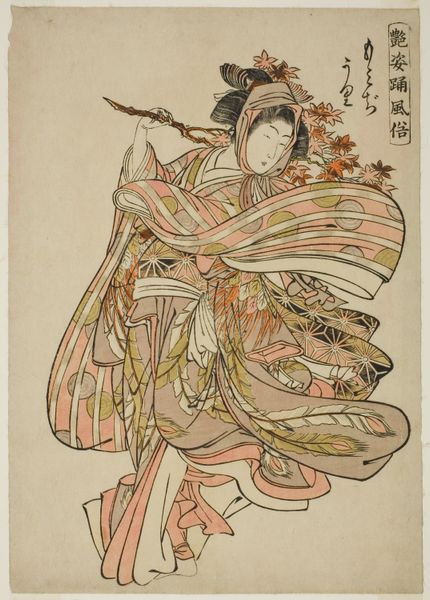
The Actor Sanogawa Mangiku I as Sanada, the daughter of the spinner Itoya, in the play "Hiragana Yomeiri Izu Nikki," performed at the Nakamura Theater in the eleventh month, 1718 1718
0:00
0:00
print, woodblock-print
#
portrait
# print
#
asian-art
#
ukiyo-e
#
figuration
#
woodblock-print
Dimensions: 54.9 × 32.6 cm
Copyright: Public Domain
Editor: This is “The Actor Sanogawa Mangiku I as Sanada…” a woodblock print created in 1718 by Torii Kiyomasu II. I find the stylization really striking, especially the patterns on the kimono and the almost geometric umbrella. What can you tell me about the imagery? Curator: This print vibrates with layered meanings. Notice how the actor, playing a specific character from a popular play, embodies layers of performance, revealing how identities, particularly gender roles, are both performed and deeply ingrained. The umbrella is significant. Beyond simple protection from the elements, what does it signify about privacy, status, or even perhaps a barrier against societal expectations? Editor: That’s a great point about the umbrella! I hadn’t considered it as anything more than functional. What about the flowers on the kimono? Curator: The flowers, most likely chrysanthemums, carry a long history of symbolism in Japanese culture, often associated with longevity, rejuvenation, and nobility. The presence of bamboo is no accident either, bamboo representing resilience and flexibility. Does that resonate for you in thinking about the character of Sanada? Editor: Yes, definitely! It's like a visual representation of her strength in the face of adversity. Curator: The power of Ukiyo-e lies in the complex interplay of symbolic images, subtly inviting us to decode not just a pretty picture but layers of social and psychological meaning embedded within it. What would you say is its modern impact on contemporary visual language? Editor: I think its emphasis on graphic style and bold colors still influences design today. I'm learning to see how images function beyond their surface, like grasping how cultural memories become crystallized in the simplest details.
Comments
No comments
Be the first to comment and join the conversation on the ultimate creative platform.
